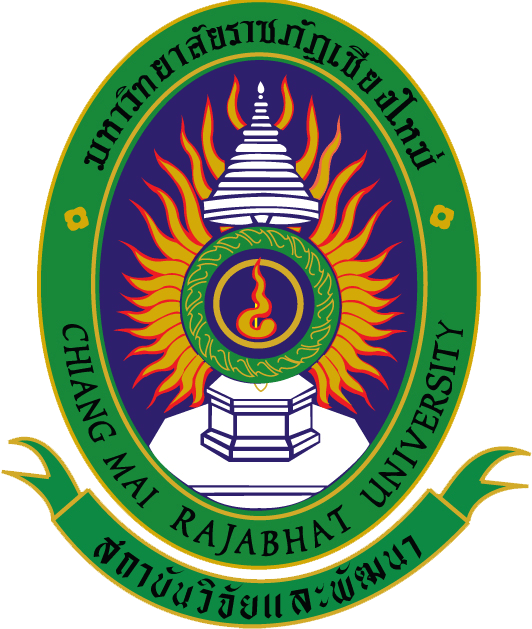
ระบบสารสนเทศงานวิจัย สถาบันวิจัยและพัฒนา มหาวิทยาลัยราชภัฏเชียงใหม่
Research Information System(RIS)
ชุดโครงการวิจัย ความรู้ด้านศิลปะ เพื่อพัฒนาคุณภาพชีวิตของผู้สูงอายุ ผู้พิการและผู้ด้อยโอกาส ในจังหวัดเชียงใหม่
ผู้ช่วยศาสตราจารย์ ดร.ณัฐวัฒน์ โสมดี
คณะมนุษยศาสตร์และสังคมศาสตร์
คำสำคัญ :
เลขทะเบียน :
546-58-HUSO-NRCT
บทคัดย่อ
การวิจัยครั้งนี้ มีวัตถุประสงค์ของการวิจัย คือ 1) จัดการเรียนรู้และวัดผลการเรียนรู้ ด้านศิลปกรรม เพื่อพัฒนาคุณภาพชีวิตของผู้สูงอายุ ผู้พิการ ผู้ด้อยโอกาสในจังหวัดเชียงใหม่ 2) ความพึงพอใจและสมรรถภาพด้านต่าง ๆ (ด้านร่างกาย อารมณ์/จิตใจ สังคม เศรษฐกิจ) ของผู้สูงอายุ ผู้พิการ ผู้ด้อยโอกาสหลังจากกิจกรรมการเรียนการสอนด้านศิลปกรรมคุณภาพชีวิต ซึ่งกลุ่มตัวอย่างที่ใช้ในการศึกษาครั้งนี้คือ ผู้สูงอายุ ผู้พิการ ผู้ด้อยโอกาสในจังหวัดเชียงใหม่ ใช้วิธีการเลือกกลุ่มตัวอย่างแบบเจาะจง โดยเครื่องมือที่ใช้ในการศึกษาได้แก่ แบบสอบถาม แบบสัมภาษณ์ แบบสังเกต และใช้วิธีการวิเคราะห์แบบพรรณนา การหาค่าร้อยละ ค่าเฉลี่ย และส่วนเบี่ยงเบนมาตรฐาน ผลการศึกษาพบว่า การจัดการเรียนรู้ด้านศิลปกรรม เพื่อพัฒนาคุณภาพชีวิตของผู้สูงอายุ ผู้พิการ ผู้ด้อยโอกาส ในจังหวัดเชียงใหม่ สร้างขึ้นมาโดยมีวัตถุประสงค์เพื่อเป็นการพัฒนาคุณภาพชีวิตของผู้สูงอายุ ผู้พิการ ผู้ด้อยโอกาส ในจังหวัดเชียงใหม่ ทั้งในด้านร่างกาย ด้านจิตใจ/อารมณ์ และสังคม ซึ่งกิจกรรมทางทัศนศิลป์ ประยุกต์ศิลป์ ประติมากรรมสร้างสรรค์ ศิลปะบาบัด ล้วนเป็นกิจกรรม เพื่อพัฒนาองค์ประกอบด้านร่างกาย พัฒนาด้านจิตใจ/อารมณ์ และพัฒนาด้านสังคม โดยในการวัดผลจัดการเรียนรู้ด้านศิลปกรรม เพื่อพัฒนาคุณภาพชีวิตของผู้สูงอายุ ผู้พิการ ผู้ด้อยโอกาส ในจังหวัดเชียงใหม่ จะใช้แบบสังเกตพฤติกรรมก่อน-หลัง เพื่อวัดผลการเรียนรู้ และวัดสมรรถภาพในการปฏิบัติกิจกรรม เด็กออทิสติกในจังหวัดเชียงใหม่ มีพฤติกรรมด้านร่างกาย ก่อนปฏิบัติกิจกรรมอยู่ในระดับปฏิบัติพฤติกรรมมากและหลังจากปฏิบัติกิจกรรมแล้ว มีพฤติกรรมอยู่ในระดับปฏิบัติพฤติกรรมมากที่สุดและมาก พฤติกรรมด้านจิตใจ / อารมณ์ ก่อนปฏิบัติกิจกรรมอยู่ในระดับปฏิบัติพฤติกรรมมากและปานกลาง และหลังจากปฏิบัติกิจกรรมแล้ว อยู่ในระดับปฏิบัติพฤติกรรมมาก พฤติกรรมด้านสังคม ก่อนปฏิบัติกิจกรรมอยู่ในระดับปฏิบัติพฤติกรรมปานกลางถึงมาก แต่หลังจากที่ปฏิบัติกิจกรรมไปแล้ว อยู่ในระดับปฏิบัติพฤติกรรมปานกลางและมากที่สุด ง เด็กด้อยโอกาส มีพฤติกรรมด้านจิตใจ / อารมณ์ ก่อนปฏิบัติกิจกรรมอยู่ในระดับปฏิบัติพฤติกรรมมากและหลังจากปฏิบัติกิจกรรมแล้วมีพฤติกรรมอยู่ในระดับปฏิบัติพฤติกรรมปานกลางถึงมากที่สุดพฤติกรรมด้านสังคม และพฤติกรรมด้านความคิดสร้างสรรค์ ก่อนและหลังปฏิบัติกิจกรรมอยู่ในระดับปฏิบัติพฤติกรรมปานกลางถึงมาก ความพึงพอใจของเด็กด้อยโอกาสโดยตรง กลุ่มตัวอย่างมีพฤติกรรมก่อนปฏิบัติกิจกรรมอยู่ในระดับปฏิบัติพฤติกรรมมากและหลังปฏิบัติกิจกรรมอยู่ในระดับปฏิบัติพฤติกรรมมากที่สุด เด็กพิการทางสายตาในจังหวัดเชียงใหม่ พบว่า พฤติกรรมด้านร่างกาย ก่อนปฏิบัติกิจกรรมอยู่ในระดับปฏิบัติพฤติกรรมน้อยและปานกลางและหลังจากปฏิบัติกิจกรรมอยู่ในระดับปฏิบัติพฤติกรรมมากและปานกลาง พฤติกรรมด้านจิตใจ / อารมณ์ ก่อนปฏิบัติกิจกรรมอยู่ในระดับปฏิบัติพฤติกรรมน้อยถึงปานกลางและหลังจากปฏิบัติกิจกรรมอยู่ในระดับปฏิบัติพฤติกรรมปานกลางถึงมากที่สุด พฤติกรรมด้านสังคม ก่อนปฏิบัติกิจกรรมอยู่ในระดับปฏิบัติพฤติกรรมน้อยถึงปานกลาง และหลังจากปฏิบัติกิจกรรมอยู่ในระดับปฏิบัติพฤติกรรมมากถึงมากที่สุด ความพึงพอใจจากการปฏิบัติกิจกรรมของผู้เรียนก่อนปฏิบัติกิจกรรมอยู่ในระดับปฏิบัติพฤติกรรมปานกลางและหลังจากปฏิบัติกิจกรรมอยู่ในระดับปฏิบัติพฤติกรรมมากที่สุด ผู้สูงอายุมีพฤติกรรมด้านร่างกาย ก่อนปฏิบัติกิจกรรมอยู่ในระดับปฏิบัติพฤติกรรมน้อยและปานกลางและหลังจากปฏิบัติกิจกรรมแล้วมีพฤติกรรมอยู่ในระดับปฏิบัติพฤติกรรมมากที่สุด พฤติกรรมด้านจิตใจ / อารมณ์ อยู่ในระดับปฏิบัติพฤติกรรมน้อยถึงปานกลางและหลังจากปฏิบัติกิจกรรมแล้ว มีพฤติกรรมอยู่ในระดับปฏิบัติพฤติกรรมมากถึงมากที่สุด พฤติกรรมด้านสังคม ก่อนและหลังปฏิบัติกิจกรรมอยู่ในระดับปฏิบัติพฤติกรรมปานกลางถึงมาก ความพึงพอใจของผู้สูงอายุโดยตรง จากการปฏิบัติกิจกรรมของผู้เรียนก่อนและหลังปฏิบัติกิจกรรมอยู่ในระดับปฏิบัติพฤติกรรมมากที่สุด เด็กในสถานพินิจคุ้มครองเด็กและเยาวชนจังหวัดเชียงใหม่ มีพฤติกรรมด้านจิตใจ / อารมณ์ ก่อนปฏิบัติกิจกรรมอยู่ในระดับปฏิบัติพฤติกรรมมากและหลังจากปฏิบัติกิจกรรมแล้วมีพฤติกรรมอยู่ในระดับปฏิบัติพฤติกรรมปานกลางถึงมากที่สุด พฤติกรรมด้านสังคม และพฤติกรรมด้านความคิดสร้างสรรค์ ก่อนและหลังปฏิบัติกิจกรรมอยู่ในระดับปฏิบัติพฤติกรรมปานกลางถึงมาก ความพึงพอใจของเด็กในสถานพินิจและคุ้มครองเด็กและเยาวชนในจังหวัดเชียงใหม่โดยตรง มีพฤติกรรมก่อนปฏิบัติกิจกรรมอยู่ในระดับปฏิบัติพฤติกรรมมากและหลังปฏิบัติกิจกรรมอยู่ในระดับปฏิบัติพฤติกรรมมากที่สุด
Abstract
This research has the objectives of the research were 1) to study and measure the learning of art to improve the quality of life of the elderly, the disabled and the disadvantaged in Chiang Mai 2) the satisfaction and competency in various aspects. Such as health, mental, emotion and economy of the elderly, the disabled and the underprivileged after the teaching and learning activities in the field of fine arts. The samples used in this study were elderly people with disabilities in Chiang Mai were selected by using sample selection methods. The instruments which used in the study were questionnaires, observation forms, descriptive analysis, determining percentage, mean, and standard deviation. The research found that Art management to improve the quality of life of the elderly, the disabled, and the underprivileged people with disabilities in Chiang Mai. The purpose of this project was to improve the quality of life for the elderly, the disabled, and the underprivileged people in Chiang Mai in the health, mental, emotional and social ways. The visual activities applied Arts Artistic sculpture was the activity to develop the health, mental, emotional and social development. In the measurement of learning management in the arts to improve the quality of life of elderly, disabilities and underprivileged people in Chiang Mai. It was used to observe the behavior before and after the activity to measure learning and the performance in the activity. The autistic children in Chiang Mai have the physical behaviors were at the high level before the activity. And after the activity, their physical behaviors were at the high and the highest level. The mental and emotional behaviors of the autistic children were at the moderate and high level before the activity. And after the activity, their mental and emotional behaviors were at the highest level. The social behavior prior to perform the activity resulted that the level of behaviors were moderate to high level. After the activity, the social behaviors were at the moderate and the highest level. The disadvantaged children's behaviors in mind and emotion ways before the activity were at the high level. After the activity, the behaviors were at the moderate and the highest level. The social behavior and creative thinking behavior before and after the activity were at the moderate and high level. The satisfaction behavior of children was directly disadvantaged was at the high level before the activity. And after the activity, the satisfaction behavior was at the highest level. Before the activity, the physical behavior was at low and moderate level, and after the activity was at moderate and high level. The mental and emotional behaviors before the activity were at low and moderate level, and after activity were at moderate level. The social behavior was at a low to moderate level. And after the activity, it was at high and the highest level. The satisfaction with the activities of the students before the activity was at moderate level. And after the activity, it was at the highest level. The elderly people have the physical behavior at low and moderate level. After the activity, the behavior was at the highest level. The mental and emotional behaviors were at low and moderate level, and after the activity, the behavior were at high and the highest level. The social behavior before and after the activity were at a moderate and high level. The behavior in the mind and emotions ways of Children in the Chiang Mai Juvenile Observation and Protection before the activity were at the high level, and after the activity, the behavior is at the moderate and high level. The social behavior and creative thinking behavior before and after the activity were at moderate and high level. The satisfaction of the children in the Children in the Chiang Mai Juvenile Observation and Protection was directly had the behaviors before the activity at the high level and the behaviors were at the highest level after the activity
ไฟล์งานวิจัย
อยู่ในระหว่างการปรับปรุงเนื้อหา562 30 พ.ค. 2561
สำนักงานคณะกรรมการวิจัยแห่งชาติ (วช.)
196 Paholyotin Rd., Chatuchak, Bangkok 10900
0-2561-2445